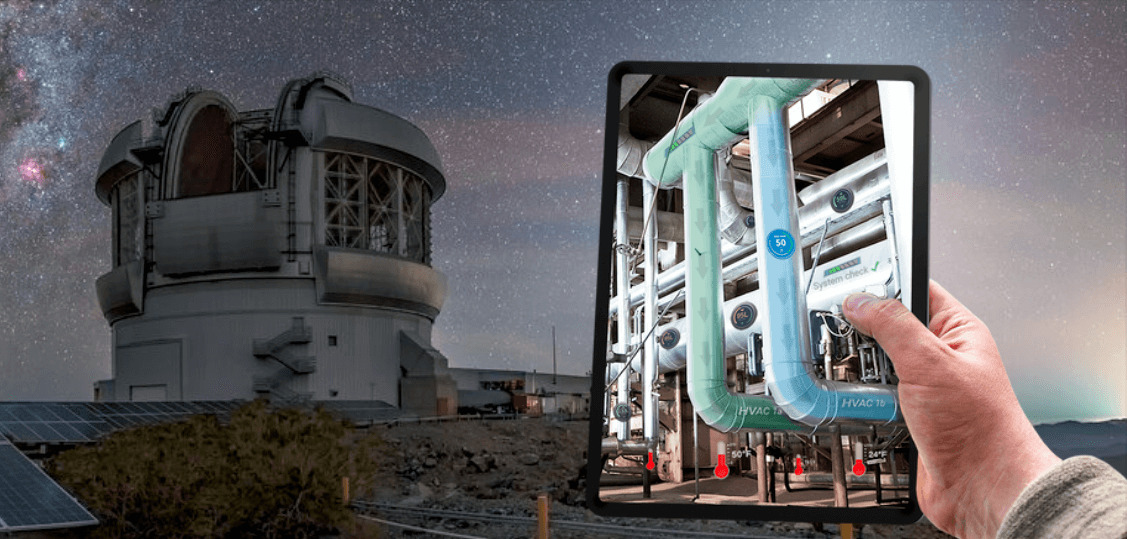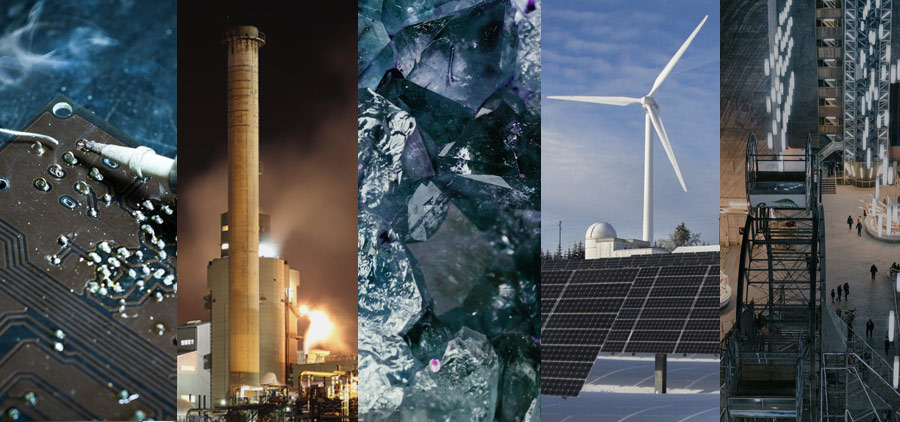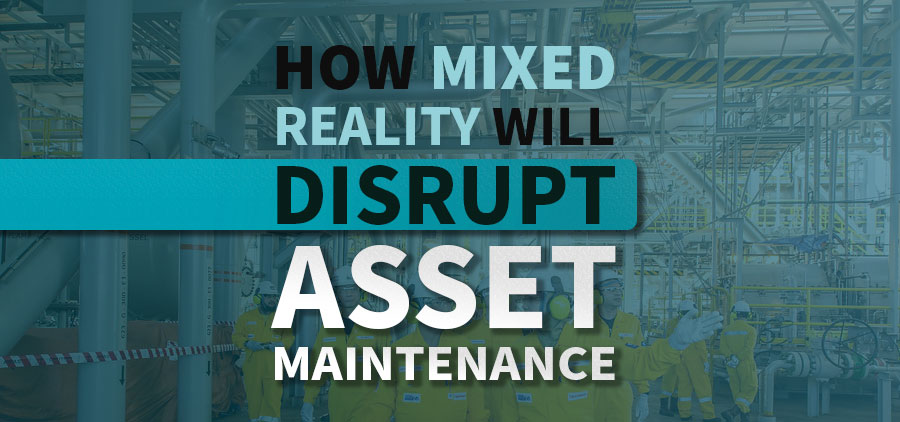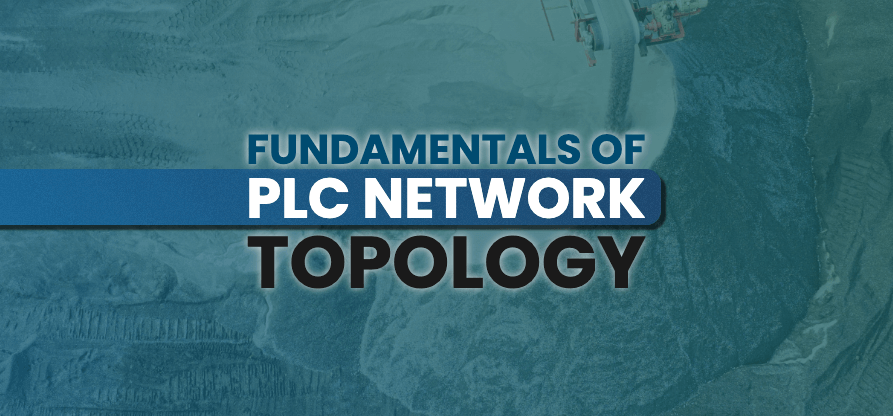Augmented Reality at 8000 ft.
Aircada and the NSF’s NOIRLab have teamed up to bring augmented reality to all new heights – all the way up past 8000 ft. above sea level at the Gemini Observatory South located in Chile. The effort has been a push to continue using the latest technology to tackle the daily challenges that come with operating one of the most advanced and largest telescopes in the world. The team was looking for a better way to visualize and monitor the vast amount of machine data at the facility, and thus were open to new and innovative ways to make this possible.

Introducing the Mountain Man
Two optical/infrared telescopes make up the Gemini Observatory. On Hawaii’s Big Island’s Mauna Kea volcano is where you’ll find Gemini North, while Mount Cerro Pachón in Chile is where you’ll find Gemini South. Paul Collins has overseen the electrical department at Gemini South in Chile since 1996. Collins struggled for years with the inability to remotely monitor vital systems when poor weather prevented the team from climbing 2,700 meters up the mountain.
After attempting to create his own remote connectivity system to monitor the telescope’s critical systems, which didn’t fully pan out, Collins began searching for an optimal SCADA system that could handle the job.
He experimented with a variety of SCADA systems, and landed on VTScada, an all-encompassing platform that could connect to their wide variety of hardware utilizing built-in, direct device drivers like Modbus and SNMP.
Pushing the Boundaries of VTScada
Collins contacted Dave Spencer at VTScada for assistance connecting to their Modbus PLCs and SNMP devices after downloading the free industrial license for VTScadaLIGHT. The Dual Server Premium plan from VTScada, which comes with two configuration/runtime licenses, redundant Alarm Notifications, unlimited thin client connections, and training credits, is what he ultimately decided to buy. He used these credits to enroll in the foundational training program at the Orlando, Florida, VTScadaFest.
Integrating VTScada with Aircada
As a technology enthusiast and on a mission of continually modernizing the facilities data acquisition and monitoring tools, Collins then shifted his focus on how to extend VTScada with augmented reality so that the critical data being captured would always be accessible in the field, floating next to each machine, where it was often needed most.
He conducted significant market research before discovering the solution he was looking for. He reached out to the team at Aircada, got a demo server deployed, and then his first glimpse of how the platform was able to augment machine data, trends, and alerts hovering over various pumps and motors.
He contacted Dave Spencer from VTScada and a member of his IT team to discuss with Aircada how best to connect the two systems. Together, they figured out how to combine the augmented reality interface of Aircada with the real-time and historical data from VTScada and not long after, Collins was able to physically inspect a pump in real time, observe its amperages, and view maintenance histories.
With just a few more spare afternoons, Collins soon had a large majority of facilities data accessible with augmented reality.
Whats Comes Next
The first step of implementing new technologies into existing processes is always to determine if it drives actual business value. This had been achieved, and now the next steps are continuing to integrate even more of the facilities data into augmented reality so that nearly every data tag running through VTScada is viewable through the Aircada platform.
Once completed, the next phase will be to begin utilizing Aircada’s more advanced features, such as guided procedures, to allow the Observatory’s team of technicians to reduce the time needed in performing routine maintenance checks. We’re extremely excited to demonstrate that the system is more than capable of tackling this next objective and will be assisting as needed in making it a reality.






